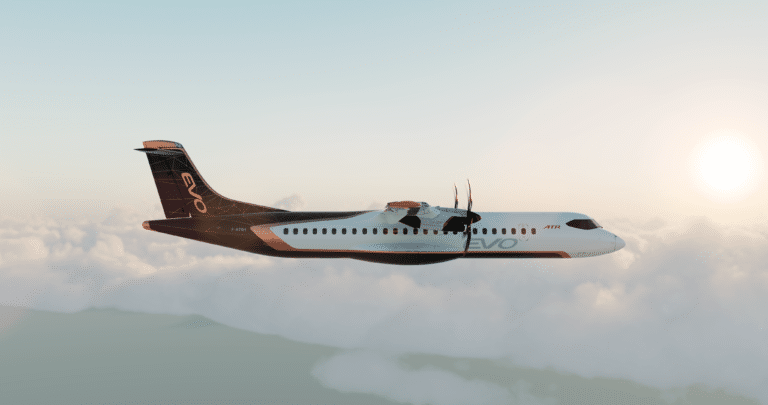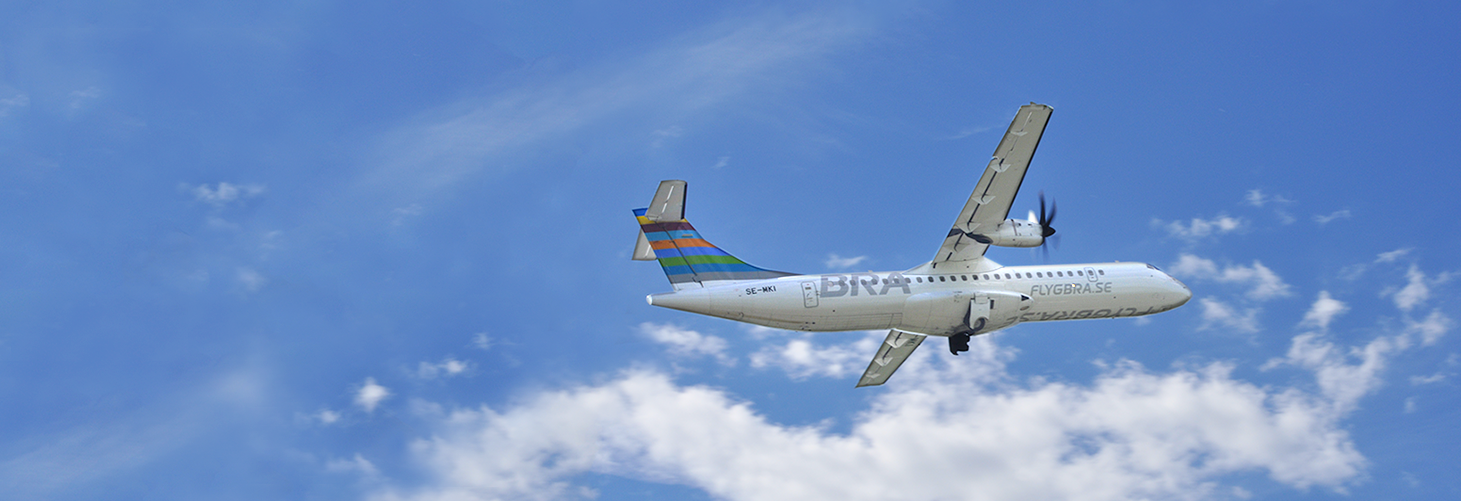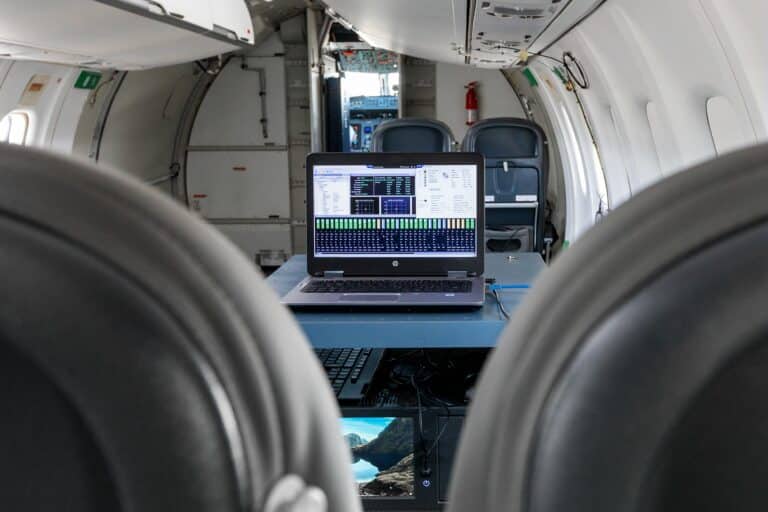ATR and Braathens in pursuit of the “Perfect Flight”
While the air transport sector is often singled out for its CO2 emissions, key players in the aviation industry are actively working on solutions to reduce the carbon footprint of their activities. In this vein, ATR, in association with the Swedish airline Braathens Regional Airlines and two companies from the fuel industry, Neste and Air BP, managed to operate a scheduled flight with 46 % fewer emissions compared with a traditional flight!
Studies conducted at global level have shown that aviation accounts for 2% of overall carbon emissions, and 13% of those produced by transport activities. This is the context in which the initiative undertaken by ATR and the Swedish airline Braathens Regional Airlines (BRA) got off the ground. The two companies recently managed to complete the first regional flight 100% designed to reduce carbon emissions to the lowest possible level. The operation was given the code name “The Perfect Flight”. Objective: prove that, by encouraging all air transport stakeholders to work together (manufacturers, airlines, airports, fuel industry) and by using currently available technology, it is possible to reduce CO2 emissions in the air transport sector. A challenge met with success, since this commercial flight operated by the airline BRA with 72 people on board, which took off from Halmstad in southwest Sweden and landed at Stockholm-Bromma airport 1 hour and 10 minutes later, registered 46% fewer CO2 emissions compared with a traditional flight!
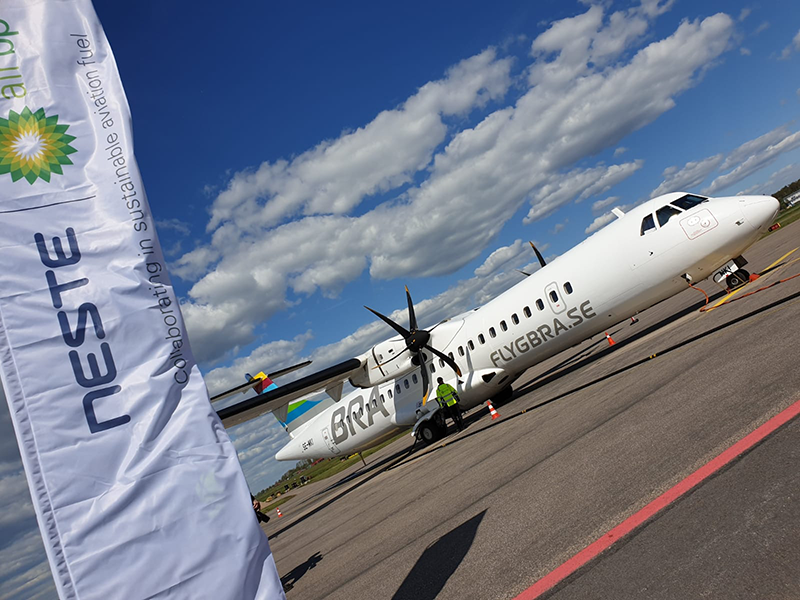
Turboprop and biofuel
The recipe for success hinges first and foremost on the use of an ATR turboprop, which consumes 40% less fuel than a turbojet. The ATR 72-600 therefore emits 40% less CO2, making it the least polluting aircraft on the regional aviation market (over distances of around 300 nautical miles, or 550 km). Second key factor: the fuel used is a mix of 50% kerosene and 50% sustainable alternative fuel. Produced by the Swedish firm Neste and supplied by Air BP, this biofuel is made from waste cooking oil and animal fats: in other words, only renewable, inedible raw materials (and no palm oil).
Finally, all aspects of the flight management process were optimised in cooperation with the airports, with the aim of reducing carbon emissions to the lowest possible level.
« We have no choice but to take action to combat climate change and drastically reduce our emissions, and the entire aviation sector needs to play its part. Today, we have shown that it is possible to achieve a more environmentally friendly performance without compromising connectivity. This is a great step that holds a lot of promise. »
Anna Soltorp, Sustainable Development Director, BRA
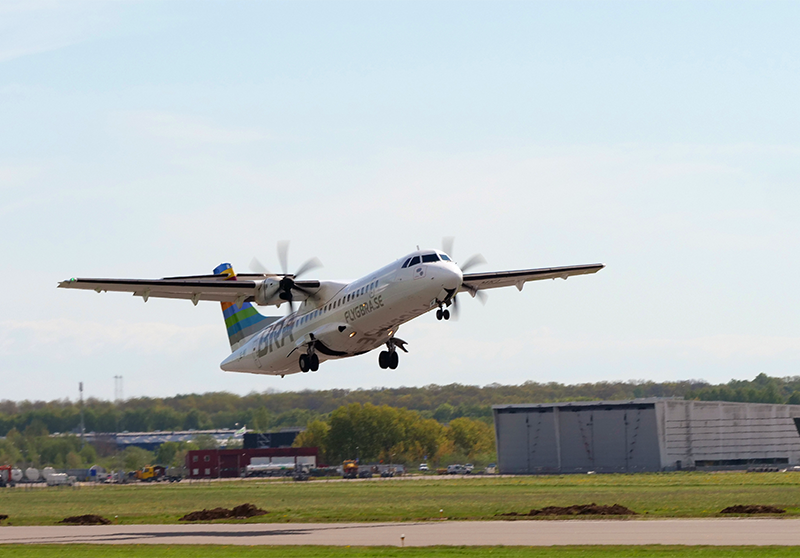
Heading towards carbon neutrality
The last factor that made this low-emission flight possible is of a political and societal nature. In this respect, Sweden was not chosen randomly: the ecological transition is already well under way here, and the country aims to be carbon neutral by 2045. It is also worth noting that Halmstad City airport is one of the 250 Air BP sites certified as carbon neutral since 2016. For all of these reasons, this initiative constitutes a powerful message for the global aviation community and a further step towards a 100% perfect flight – a flight with 0% emissions. However, achievement of this goal hinges on the development of the biofuel sector, a next step that Stefano Bortoli, CEO of ATR, strongly urges decision-makers to pursue: “Biofuels are not currently available at a competitive price or in sufficient quantities,” he warns. “We are firmly convinced of the need to develop the biofuel sector to make them available on the market on a massive scale, more locally accessible and at a more reasonable price.”






